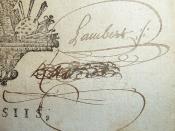It was in 1913 that Neils Bohr went public with his three postulates. The most important one to us right now is his third postulate. To understand that we have to know his other postulates. Bohr stated that the electron revolves in circular orbits around the nucleus which are restricted by the quantization of angular momentum. His third postulate states that when an electron gains energy it will jump to a higher energy level and when it returns down to its lowest energy level, (ground state) it releases photons or electromagnetic radiation in the form of light, infrared radiation (heat) or ultra-violet light.
BohrÃÂs postulates led to spectroscopy which the use of the absorption, emission, or scattering of electromagnetic radiation by atoms or molecules to qualitatively or quantitatively study the atoms or molecules. By using BohrÃÂs postulates, chemists were able to determine specific patterns and relationships that specific elements or compounds had.
By knowing these relationships we can easily determine which compounds or elements are present in everyday substances or even substances humans have never touched before.
But it wasnÃÂt just what kind of radiation was emitted when returning to ground state; it was also about how much of that radiation was not absorbed. BohrÃÂs stated that most matter is empty space. The idea that an alpha particle can pass right through a compound is very likely and was proven by Rutherford in 1896. This was the main concept behind spectroscopy ÃÂ what could go through.
Beer-Lambert decided to study this concept and he determined that the amount of energy that passes through a substance is determined by its concentration, molar absorbtivity, and the path length. This relationship is known as Beer-LambertÃÂs Law or BeerÃÂs Law. Energy dissipates over time due to interactions with the elements and a concentration...


